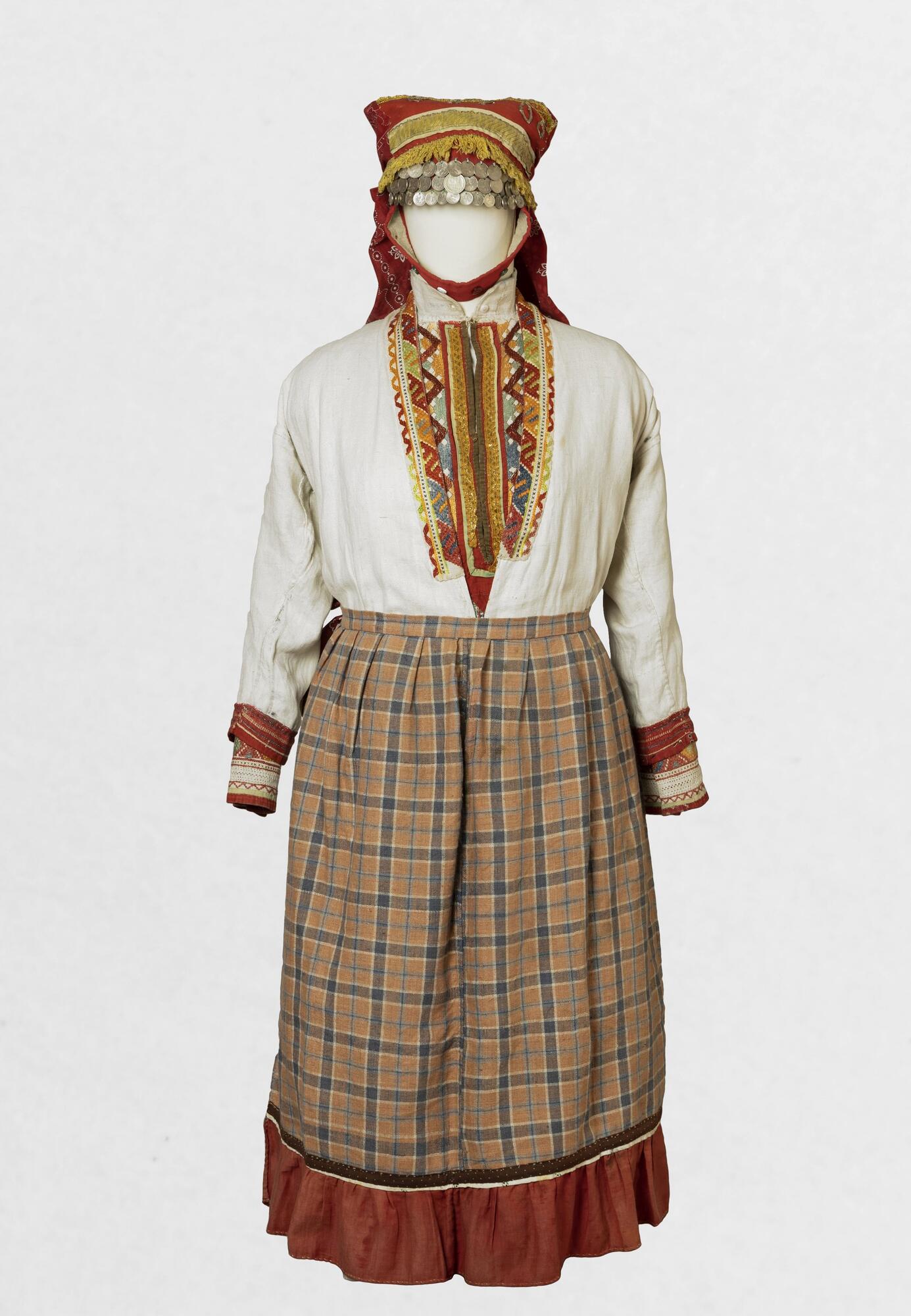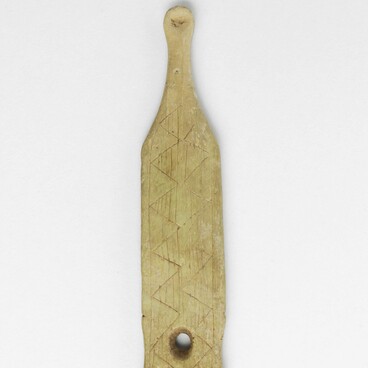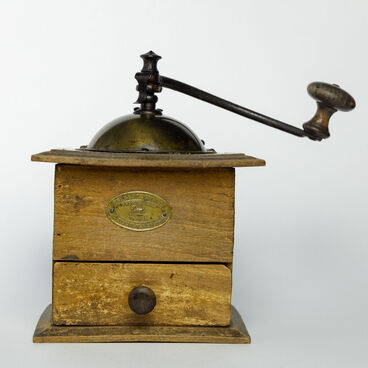The Besermyan woman’s dress, presented in the collection of the Glazov Museum, was in use in the northern regions of Udmurtia until the end of the 1930s. The Besermyan are a small-numbered Finno-Ugric people in Russia, who previously lived on the territory of Volga Bulgaria, which once existed on the territories of the present-day Tatar and Chuvash Republics, as well as the Ulyanovsk, Penza and Samara regions. Having converted to Islam, the group began to shift away from the Udmurts, and the ethnonym “Besermyan” was probably derived from the term “Muslims”. The Besermyan profess Orthodox Christianity, but their faith has retained elements of Islam. Today, the Besermyan live in the Kirov Oblast and Udmurtia.
The traditional clothes of the Besermyan, sewn from bleached canvas, were multipiece and consisted of a long shirt with a frill at the hem, a robe and an apron. They wore colorful homespun stockings and bast shoes on their feet. The Besermyan wrapped their heads and necks with a narrow long cloth. Then they put on a headdress called “kashpu”, which was secured under the chin with a narrow ribbon. The headdress and ribbon were decorated with silver coins, beads, cowrie shells and coral beads.
A rectangular headscarf was thrown over the kashpu in a particular way: it was folded in half on the back, and the lower end was tucked under the apron straps. The rules of etiquette prescribed to cover the hair. In the olden days they used to say, “Do not dare show your uncovered head to the sun! You can take your headscarf off as soon as the sun sets! The head should be ashamed of the sun!”
The neckline of the shirt, as well as the sleeves and sides of the robe were decorated with embroidery. An intricate pattern, a braid or strip of fabric served not only decorative, but also magical purposes. The Besermyan believed that these details had protective power and defended the wearer from diseases and evil. Each ornament had its own meaning, for example, the “frog head” pattern was a symbol of fertility, a motif of a female goddess.
Unlike the clothing of the northern Udmurts, the traditional Besermyan dress included many bright colors in the embroidery: orange, pink, green, blue and other colors. To show the beauty of the embroidery on the shirt, the sleeves of the upper robe were shortened or gathered.
The traditional clothes of the Besermyan, sewn from bleached canvas, were multipiece and consisted of a long shirt with a frill at the hem, a robe and an apron. They wore colorful homespun stockings and bast shoes on their feet. The Besermyan wrapped their heads and necks with a narrow long cloth. Then they put on a headdress called “kashpu”, which was secured under the chin with a narrow ribbon. The headdress and ribbon were decorated with silver coins, beads, cowrie shells and coral beads.
A rectangular headscarf was thrown over the kashpu in a particular way: it was folded in half on the back, and the lower end was tucked under the apron straps. The rules of etiquette prescribed to cover the hair. In the olden days they used to say, “Do not dare show your uncovered head to the sun! You can take your headscarf off as soon as the sun sets! The head should be ashamed of the sun!”
The neckline of the shirt, as well as the sleeves and sides of the robe were decorated with embroidery. An intricate pattern, a braid or strip of fabric served not only decorative, but also magical purposes. The Besermyan believed that these details had protective power and defended the wearer from diseases and evil. Each ornament had its own meaning, for example, the “frog head” pattern was a symbol of fertility, a motif of a female goddess.
Unlike the clothing of the northern Udmurts, the traditional Besermyan dress included many bright colors in the embroidery: orange, pink, green, blue and other colors. To show the beauty of the embroidery on the shirt, the sleeves of the upper robe were shortened or gathered.






